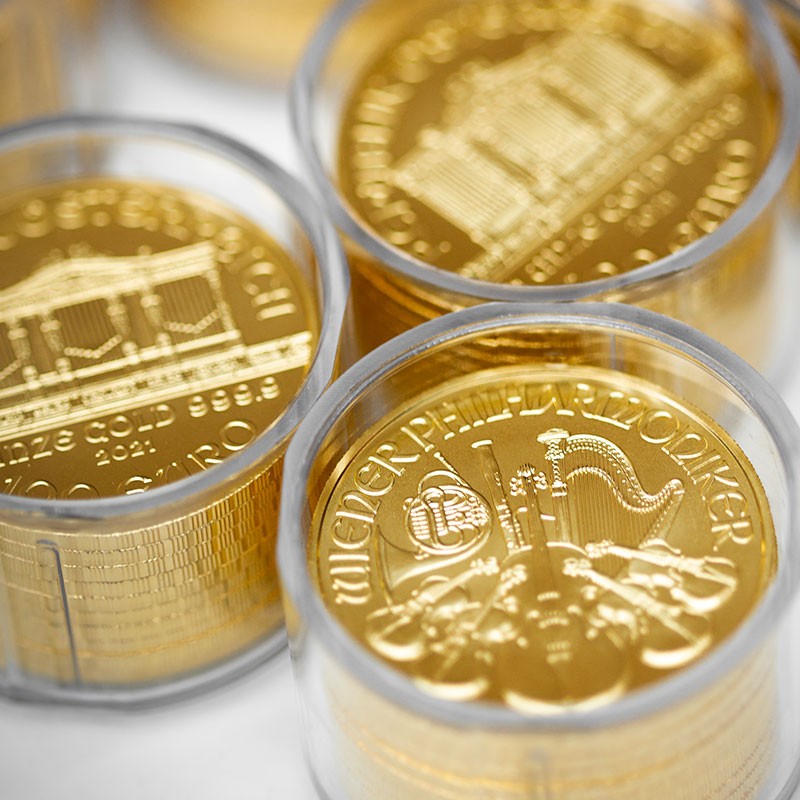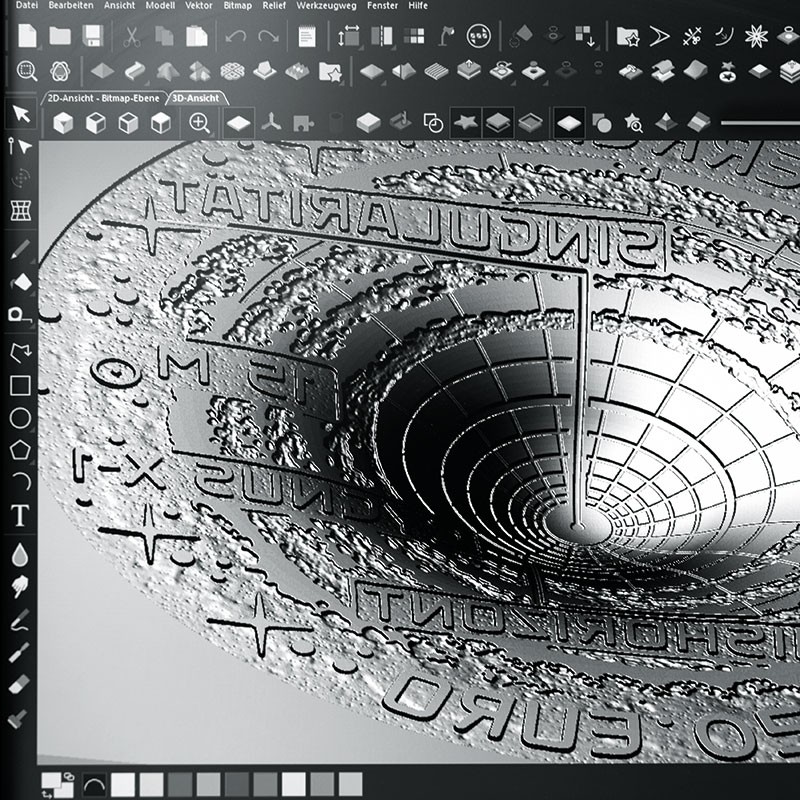In addition to liquid assets and securities, precious metals are also interesting components of a portfolio. But under exactly what circumstances should you consider investing in gold? What are the advantages of buying in physical form over buying on paper? Which precious metals are preferable? Are coins or bars more interesting? Investment products or collector coins? What timescale make sense? These questions are briefly addressed below.
The guideline that always applies to investors is that expectations of high returns are matched by high risks. As a general rule, assets should never be concentrated in just one or a few types of asset. There is no rule of thumb when looking for a suitable portfolio composition. Most experts recommend that gold should make up at least 5-10 per cent of a long-term investment strategy.
A wide variety of options are open to an investor wishing to invest in precious metals. In addition to a physical investment (coins, bars, etc.), numerous exchange-traded products, such as exchange traded funds, certificates and mining shares, are available.
The physical possession of investment coins or gold bars is fundamentally different to an investment in securities. There is no counterparty risk (or the corporate risk of gold mining stocks). Since this is one of the most interesting characteristics of gold, silver and platinum, there are many arguments in favour of investing in physical precious metals. Gold cannot go bankrupt and is not bound to any promises, yet it is extremely liquid and can be used without significant transaction costs.
As an alternative to physical investments, securities such as exchange traded funds are often recommended. These securities mostly reflect the performance of gold but are in turn subject to counterparty risk and also incur an administration fee. The tax situation can also be disadvantageous compared with an investment in physical metals. The main advantage of investing in gold-linked securities, on the other hand, is that the investor does not have to worry about storage.
Likewise, an investment in gold mining stocks cannot be compared with an investment in physical gold, as the price development of the stocks can be significantly uncoupled from the metal. The performance of stocks is usually much more volatile than that of gold.
When it comes to physical investments, gold is preferable to silver and platinum for tax purposes, as there is no sales tax on its purchase. The higher value density of gold also makes it more attractive for larger investments.
Gold bars are standardised and globally recognised stores of value that can be exchanged for cash practically anywhere in the world. In general, the following applies to bars: the higher the weight, the lower the premium; the smaller the bar, the higher the “spread”, i.e., the difference between the sale and purchase price. The fineness of a bar also has to be taken into account. The highest denomination of fineness for gold bars is "999.9", which means that they consist of at least 99.99 per cent pure gold.
A distinction can be made between cast and minted bars. Bars weighing less than 100 grams are usually minted and embossed, which is why they have the finer surface of the two. From 250 grams cast bars predominate, which have a coarser appearance and mostly round edges as well as a matt surface, though no less quality.
In addition to the fineness, weight and the emblem of the manufacturer, gold bars always bear a production number. All bars produced by Münze Österreich AG meet the “Good Delivery” standard of the London Bullion Market Association (LBMA). This internationally recognised certification ensures maximum security and quality. Bars with good delivery status are accepted and traded worldwide. So-called “standard bars”, which usually weigh 400 ounces (12.44 kilograms), are of little relevance for private investors.
Other noteworthy bars (generally with a higher premium) include:

Bullion coins are aimed specifically at investors and are minted in large numbers. The decisive benefit for the investor is that the minting charge on the coins is usually very low. They are characterised by a high fineness and are usually produced with a weight of 1 troy ounce (31.1 grams). Smaller denominations such as half an ounce, quarter of an ounce, tenth of an ounce and 1/25 of an ounce are also available. Here, too, the following applies: For smaller units, higher premiums are to be expected.
Bullion coins are often legal tender in their country of origin. This is the case of the Vienna Philharmonic in Austria, where the 1 ounce coin has a face value of 100 euro. The face value is thus mainly symbolic, as it is well below the value of the precious metal. The most famous bullion coins besides the Vienna Philharmonic are the Krugerrand from South Africa, the Maple Leaf from Canada, the Koala from Australia and the American Gold Eagle from the United States.

The value of collector coins is made up of the combination of the metal value and the collector value and is therefore significantly higher than the pure material value. The metal value is usually easy to determine. In order to be able to determine a fair collector value, however, considerable prior knowledge is necessary. Collector coins have far less liquidity than investment coins and the difference between their purchase and sale price is significantly larger, which is a disadvantage for the investor. Collector coins and medals are popular gifts for friends and relatives, especially for special occasions such as weddings and christenings. In contrast to medals, coins are official means of payment that could be or still can be used as a means of payment within their country of issue. That is why coins always bear a denomination in the country’s currency and a face value.
In summary, there are many arguments in favour of investing in physical precious metals. Bars and investment coins are particularly suited to this purpose.


There are also pros and cons when storing gold, silver and platinum, which should be carefully weighed up. It is not only in relation to investments themselves that diversification reduces risk, the concept also applies to storage. The safe deposit box is still the most popular storage choice. Small lockers cost around 80-100 Euros per year to rent and one-off fees and insurance usually have to be paid. A significant disadvantage of this method is the fact that access is usually only possible during regular bank opening hours. This is particularly disadvantageous in the event of a crisis, such as a bank run or closure. This disadvantage is mostly addressed by private safe providers, although the costs are usually higher. It is also possible to store gold at home in a safe. In this case, it is important to keep the location secret and to adequately insure the contents
Münze Österreich AG offers a direct storage option: the collective storage of your investment coins and bars purchased directly from Münze Österreich AG in its insured Gold Depot at Heumarkt 1, 1030 Vienna.